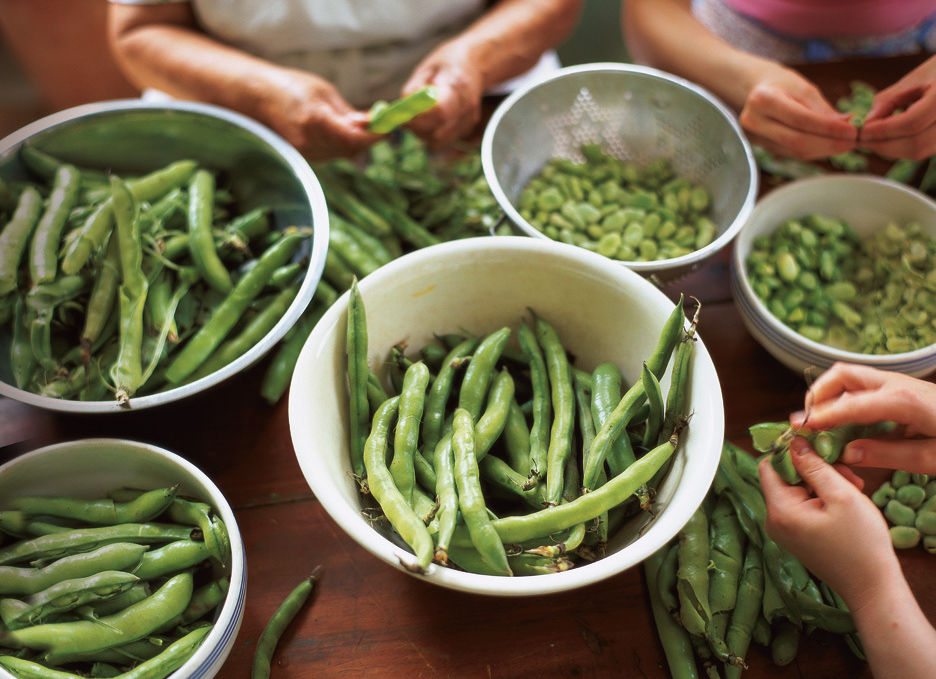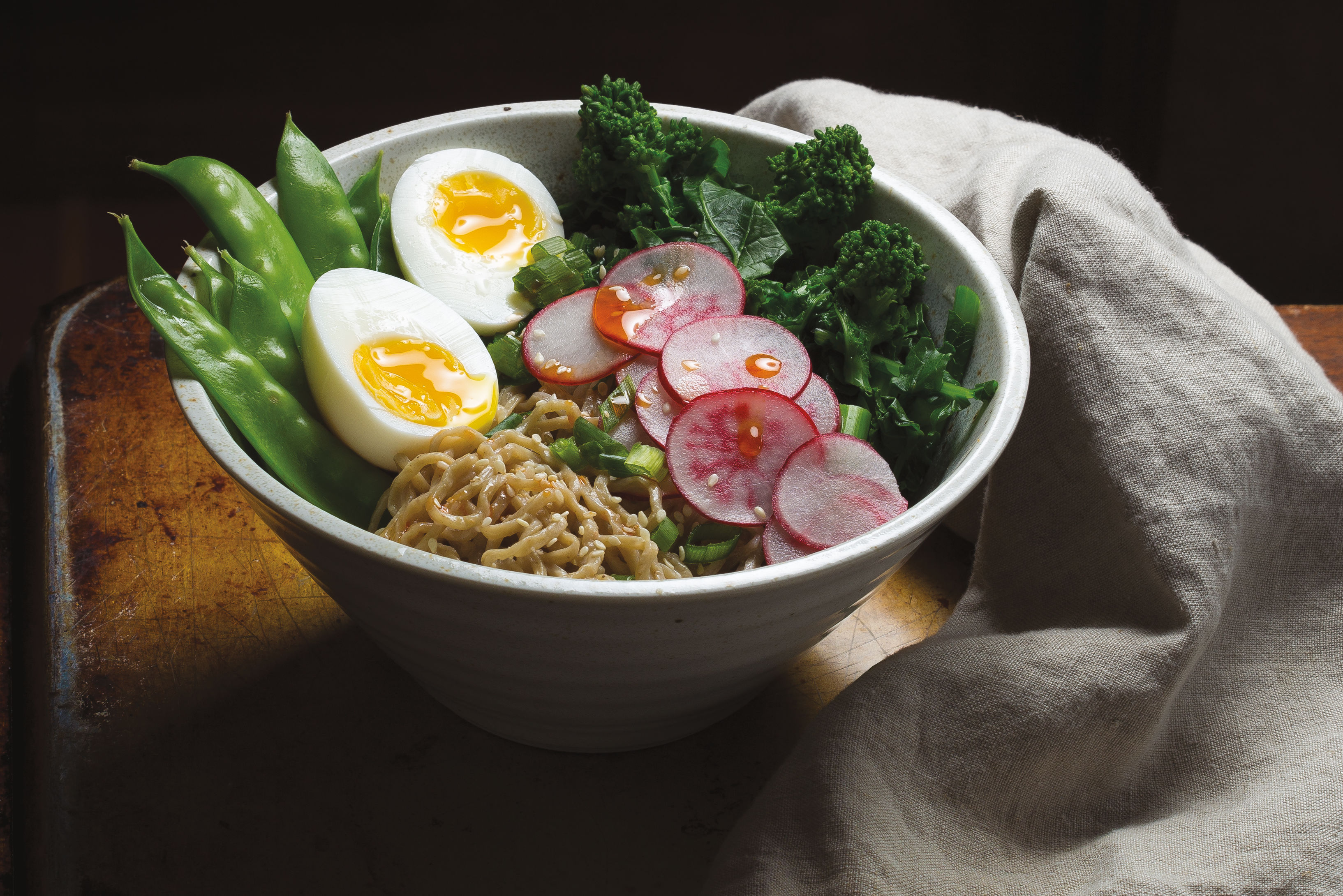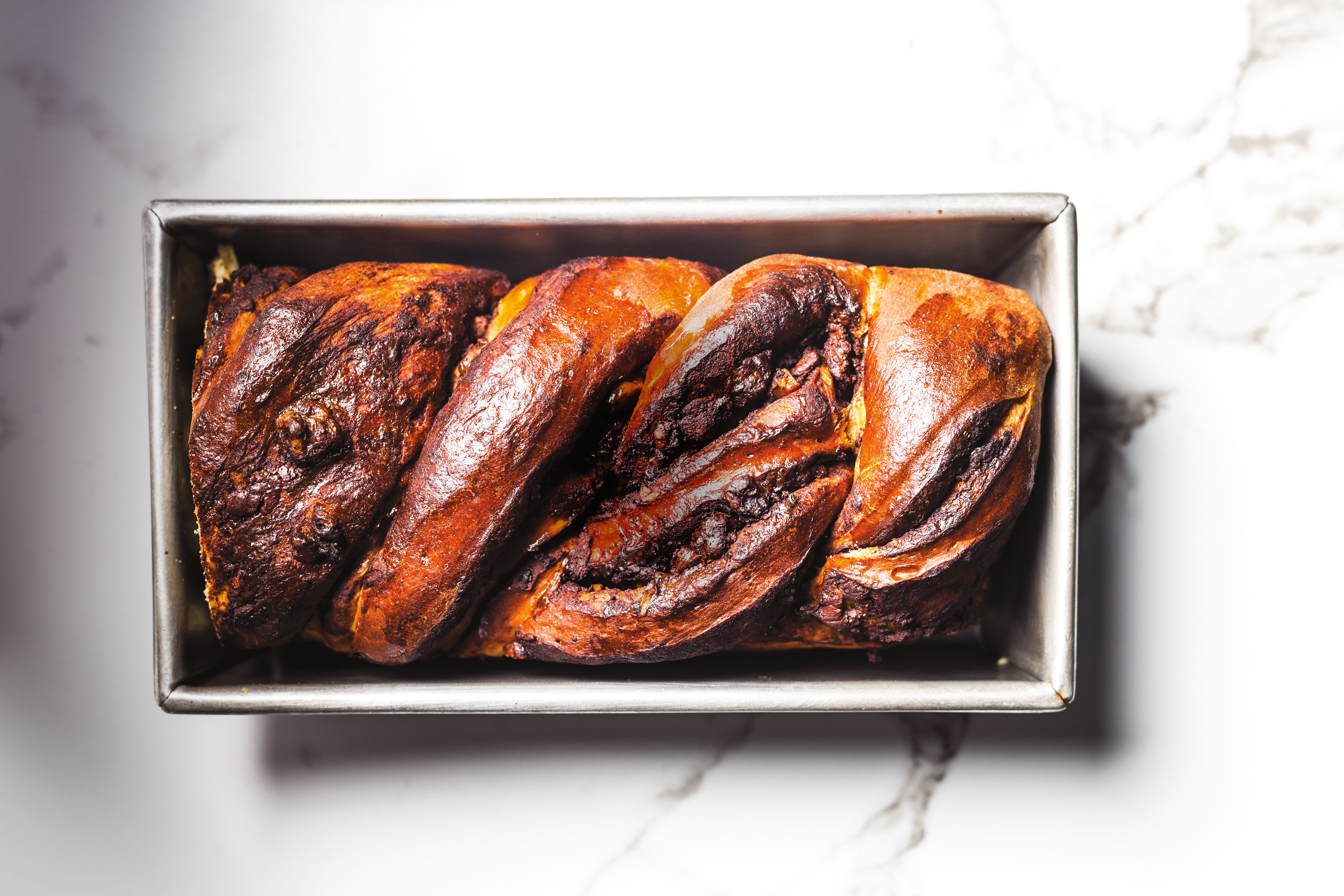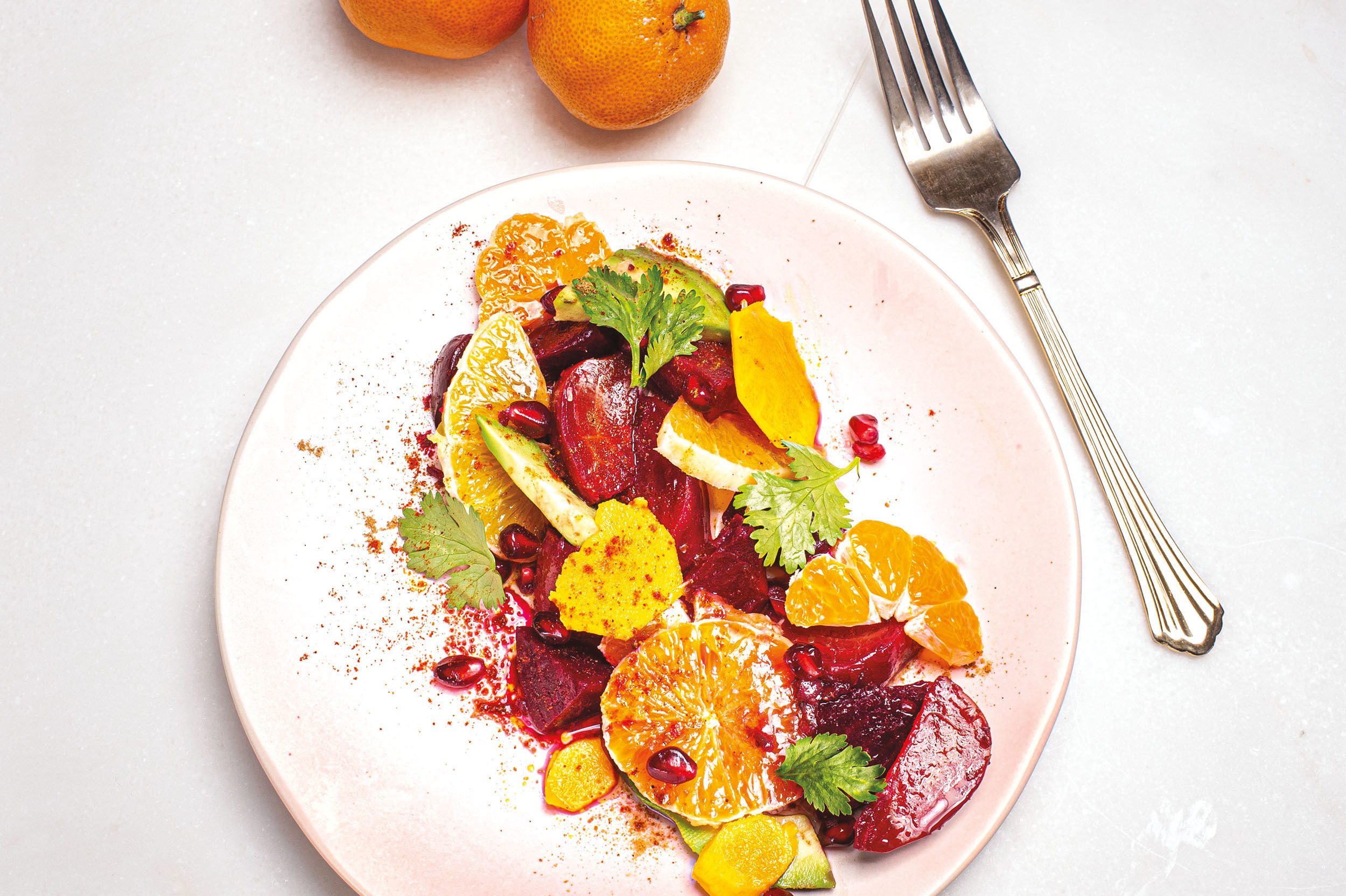Green Revival

Image: Ben Fink
IN EARLY FEBRUARY I dined with two local chefs, David Padberg of Park Kitchen and Troy MacClarty of Lovely Hula Hands, each of whom uses mostly locally grown, organic produce in his restaurant. This meant, of course, that they were both in the middle of the four-month period in which rutabagas, turnips, potatoes and squash must continually be spun in novel ways. As we dined on squash gnocchi, they both admitted to winter-vegetable fatigue. What they really craved was something lighter, something green, something…
"Fava beans," said Padberg, dreaming of the day two months hence when favas would, finally, come into season.
"Faaava beans," repeated MacClarty, drawing out the first word as though he were intoning the name of his newborn, or perhaps something holy.
Their fervent anticipation was not merely the eager expression of a couple of poetic cooks, but of their innate appreciation for this harbinger of spring. The appearance in mid-April of the mild, buttery fava bean—small, bright green and hard to open—has for many cultures signified abundance and renewal. For instance, the fava (also known as a broad bean or horse bean) has been placed on St Joseph’s altars for centuries as insurance against famine. On the other hand, the Greek philosopher Pythagoras advised against their consumption because he believed they contained the souls of the dead. Which must mean the mathematician never had the pleasure of partaking in the fava’s silken flavor.
Or perhaps Pythagoras was merely annoyed with the vegetable’s laborious preparation requirements. Favas come encased in pods that toughen and become inedible as they mature. Inside, the beans are nestled in tiny divots of delicate down. And even once you’ve pried the beans out of the pod, they’re covered in a chewy outer skin that, later in the season, must be removed by boiling them in water for a few minutes before consuming the bean itself.
Despite the stubborn nature of the legume—which, from April through July, can be found at stores like New Seasons and Pastaworks, as well as at local farmers markets—just about every chef in town is in love with its versatility. When I recently visited chef Jack Yoss at the Pearl District’s Ten-01 restaurant, where fava beans are featured prominently on the spring menu, he exhibited the same ardor MacClarty and Padberg had.
"They have a little muskiness, which makes them perfect with morels," he says. "I also like to use the fava leaves like you would pea tendrils; you can sauté them and mix them with a little citrus, and it’s a natural complement to the beans." He also uses them in soups and as an accompaniment to salmon.
One of Yoss’s favorite things to do with the fava is also the simplest: whisking them into a vinaigrette, which he says proved so popular last summer that one customer came in every day requesting a side of it with everything she ordered. "It was a little bit labor-intensive," he says—but he understood, "because they’re just that good."
Fava Bean-Feta Vinaigrette
Jack Yoss likes to drizzle this vinaigrette over cured meats, especially Ten-01’s house-made lamb prosciutto. To transform the vinaigrette into a dip, the shelled fava beans may be lightly mashed before being tossed with the vinaigrette.
Makes about 3 cups
- 1 lb fresh fava beans in the pod, or 1 cup shelled fresh fava beans
- ¾ cup extra virgin olive oil
- ¾ cup canola oil
- 3 oz champagne vinegar
- 3 oz small dice or crumbled feta cheese
- 1 tbsp chopped preserved lemons or ½ tbsp lemon zest
- 1 tsp finely chopped fresh oregano
- 1 tsp finely chopped fresh mint
- 1 tsp finely chopped fresh parsley
- 1 tsp finely chopped chives
- Salt and pepper to taste
- Remove beans from 1 lb of fresh fava pods.
- Cook beans in boiling water until tender, approximately 2 minutes.
- Transfer to ice water. Peel off outer hulls. (You should have about 1 cup of hulled beans.)
- Prepare vinaigrette: Place remaining ingredients in a mixing bowl. Stir together and season with salt and pepper.
- Toss with fava beans.




